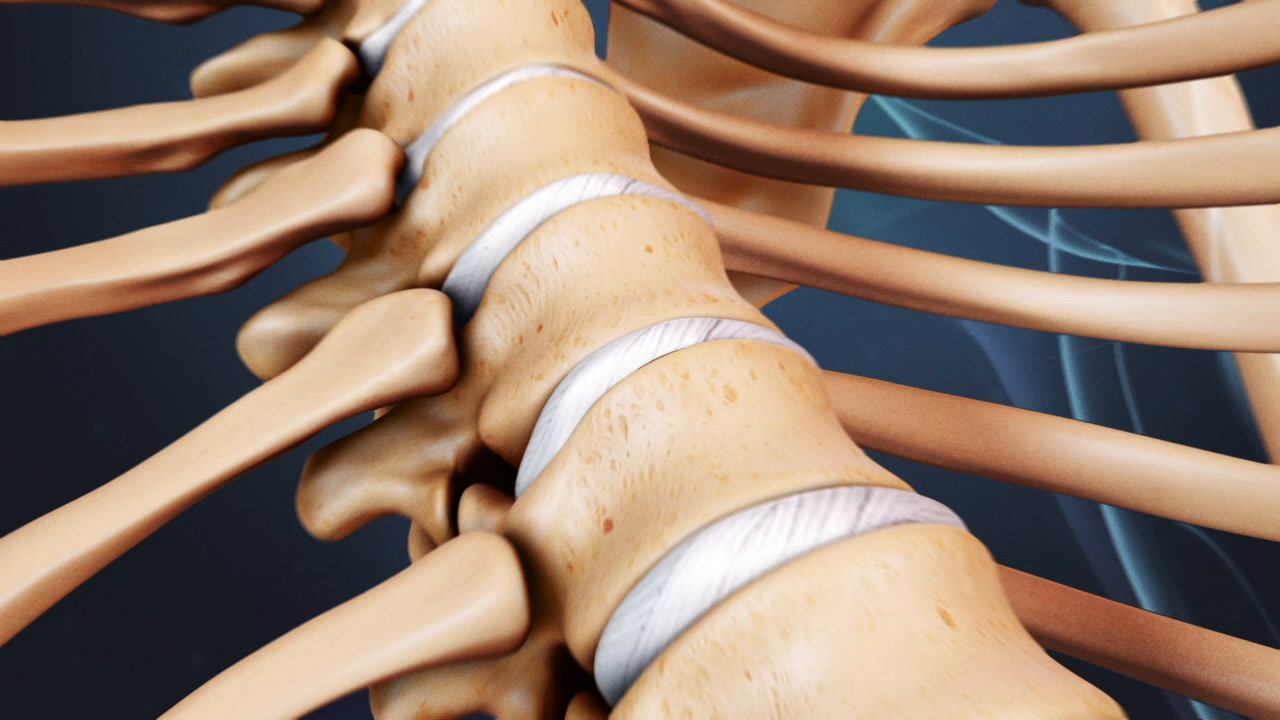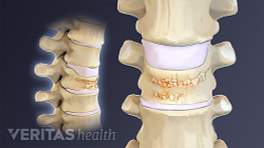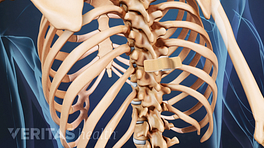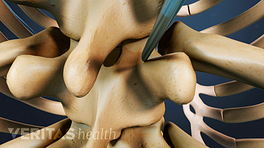A compression fracture is defined as a fracture that occurs because of compression of the bone in the spine.
Most compression fractures occur in vertebrae that have been weakened by osteoporosis or other diseases that weaken bone, such as cancer. The fracture occurs when the bone has deteriorated to the point that it can no longer support the spinal column in daily activities.
While compression fractures can occur anywhere in the spine, they typically occur in the thoracic region, which includes the T1 through T12 vertebrae, or in the lumbar spine, the L1 through L5 vertebrae. They rarely occur above the T7 level of the spine.
Vertebral compression fractures can occur in one or more vertebrae.
Commonly, the fracture results in a wedged shape vertebral body, as the bone in the front of the spine column collapses and loses height, but leaves the back of the bone unchanged.
Symptoms of a spinal compression fracture can vary widely.
The first sign is often severe acute back pain that feels better with rest. The area around the fracture may be sensitive to touch.
Though rare, if the collapsed vertebra is compressing one or more nerves, pain may radiate down the path of the nerve, such as into the arm or leg.
Other common symptoms of compression fracture include pain when twisting or bending, loss of height, and a hunched forward position called kyphosis.









